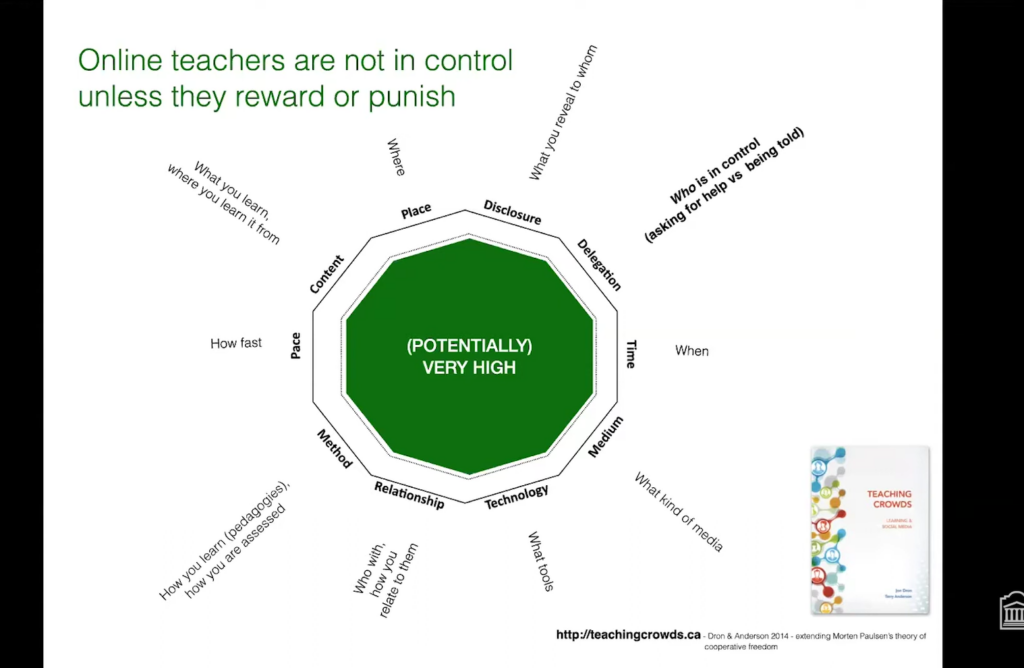Blog #1
This week I watched Jon Dron’s presentation and read Weller and Marr’s article.
These resources led me to consider the central question: Are we really building “learning communities” or are we simply moving traditional educational content online?
Jon Dron emphasized that “distance is not just physical distance, it changes control, interaction, and belonging”, and Weller used many years of technological development to illustrate that it’s not every new tool that has left an impact, but rather a shift in the philosophy of education behind it, and Marr pointed out that the rise of online education requires a new pedagogical approach to match the needs of the students. Marr points out that the rise of online education requires a new pedagogy to match the highly self-directed learning environment.
These two charts are from a Jon Dron presentation. They compare and contrast the differences in student learning freedom between traditional classroom instruction and online learning environments. They convey a central point: online learning may give students greater freedom, but it also means that the teacher’s control is eroding unless the balance is re-established through rewards and punishments. How to balance the degree of student freedom may be a new direction in the transformation of teacher identity.


My feeling is that the epidemic forced us to use online education, and online education forced us to redefine “learning” to mean self-directed learning!
This also connects to my interest in The Changing Role of Educators: Are instructors becoming facilitators rather than traditional lecturers?
Teachers are no longer “transmitters” of knowledge, but connectors, guides, and community builders.
Students need to be more self-managed, but some, like me, have not yet fully adapted to this change.

I realized that a learning community is the real core value of online education. It’s not just about video lectures or automated corrections. Educational technology provides the tools, but real learning happens in the connections between people.


